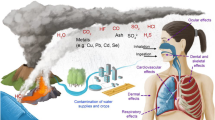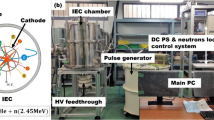Abstract
In 1951 and 1952 specialists from the Mayak production association investigated the radiological situation in the area of the Metlinski reservoir that was located 5–7 km from the site of liquid radioactive waste (LRW) discharge. Based on their measurements of both the specific radioactivity in the water and the dose-rate above the water surface, the γ-field above the water surface in 1951 was demonstrated to be mainly due to 95Zr+95Nb. The dose-rate at the shore of the reservoir was calculated for the period 1949–1951. In November and December 1951, the γ-field at the shore was mainly due to 140Ba+140La. For the period 1949–1951, the external exposure of the Metlino population due to the decay of these radionuclides was about 200 R (2 Sv), most of the dose having been produced in 1951. The contribution of 137Cs to external doses did at that time probably not exceed a fraction of several percent. This finding is in contradiction to the assumptions made in the most recent TRDS-2000 system that was developed to reconstruct the doses to the residents of the Techa river. The results presented here demonstrate that the reconstruction of external doses received by the Metlino population as well as by the Techa river residents can be improved for the most critical period between 1949 and 1954.


Similar content being viewed by others
Notes
In contrast to current usage, activities in this article are specified in the former unit Ci (=3.7×1010 Bq). This is done in order to simplify the reference to historical records and also to facilitate comparison with those related Russian publications which still employ the former unit.
In contrast to current usage, doses in this article are usually specified in the former unit R (Röntgen). This is done in order to simplify the reference to historical records and also to facilitate comparison with those related Russian publications which still employ the former unit.
References
Mayak Production Association (1950) Decontamination of low-active solutions from toxic radioactive elements and hexavalent chrome and discharge of decontaminated solutions: report. Mayak PA Archives, Ozyorsk
Mokrov YG (2004) Internal and external dose assessments for the population of the Metlino and Muslyumovo settlements living at the Techa river during 1949–1954. Radiat Environ Biophys (in press)
Ilyin DI, Petrova AI, Stepanova LG, Sharalapov VI (1951) About the contamination of Mendeleev plant territory by radioactive products. Report of quarter 4, 1951. Mayak PA Archives, Ozyorsk
Kimel LR, Mashkovich VP (1966) Ionizing radiation protection: reference book. Atomizdat, Moscow
Mokrov YG (2003) Reconstruction of the radionuclide spectrum of liquid radioactive waste releases into the Techa river in 1949–1951. Radiat Environ Biophys 42:7–15
Mokrov YG (2002) Reconstruction and forecast of the Techa river contamination. Part 1. Suspended particles’ role in the forming process of the river Techa contamination in 1949–1951. Library “Radiation Safety Problems” No 1—Ozyorsk
IAEA (1982) Generic models and parameters for assessing the environmental transfer of radionuclides from routine releases. Exposure of critical groups. Safety Series No 57: Procedure and data. International Atomic Energy Agency, Vienna
Hydrometeorology Committee (1988) Prediction technique of the reservoir contamination status in operational deviations at NPP: methodic recommendations. RD 52.26174–88. USSR State Hydrometeorology Committee, Moscow
Booth RS (1976) A systems analysis model for calculation of radionuclide transport between receiving waters and bottom sediments. In: Miller MW, Stannard JN (eds) Environmental toxicity of aquatic radionuclides: models and mechanisms. Ann Arbor Science, Ann Arbor, pp 133–164
Sereda GA, Rovinsky FY (1963) Radioactive equilibrium shift between90Sr and 90Y in lake water. Atomic Energy 14:326–327
Mokrov YG (2003) Reconstruction and forecast of the Techa river contamination. Part 2. Source term reconstruction and dose assessment for the Techa riverside population in 1949–1954 (in Russian). Library of “Radiation Safety Problems” Nr. 2—Ozyorsk
Mokrov YG (2003) Radioactive contamination of bottom sediments in the upper reaches of the Techa river: analysis of the data obtained in 1950 and 1951. Radiat Environ Biophys 42:155–168
Mokrov YG (2004) Radioactive contamination in the upper part of the Techa river: stirring-up of bottom sediments and precipitation of suspended particles: analysis of the data obtained in 1949–1951. Radiat Environ Biophys 42:285–293
Ilyin DI (1956) Migration of radioactive substances from open reservoirs. Doctoral thesis (in Russian). Technical Sciences, Mayak PA Archives, Ozyorsk
Marey AN, Ilyin DI et al. (1952) Influence of the rain water of Combine 817 on sanitary condition of the Techa river and population health. Institute of Biophysics, Moscow
Kocher DC (1983) Dose-rate conversion factors for external exposure to photons and electrons. Health Phys 45:665–686
Akleev AV, Kiselev MF (eds) (2001) Medico-biological and ecological consequences of the Techa river contamination. Moscow
Jacob P, Göksu Y, Taranenko V, Meckbach R, Bougrov NG, Degteva MO, Vorobiova MI (2003) On an evaluation of external dose values in the Techa River Dosimetry System (TRDS) 2000. Radiat Environ Biophys 42:169–174
Taranenko V, Meckbach R, Degteva MO, Bougrov NG, Göksu Y, Vorobiova MI, Jacob P (2003) Verification of external exposure assessment for the upper Techa riverside by luminescence measurements and Monte Carlo photon transport modeling. Radiat Environ Biophys 42:17–26
Degteva MO, Vorobiova MI, Kozheurov VP, Tolstykh EI, Anspaugh LR, Napier BA (2000) Dose reconstruction system for the exposed population living along the Techa river. Health Phys 78:542–554
Author information
Authors and Affiliations
Corresponding author
Additional information
An erratum to this article can be found at http://dx.doi.org/10.1007/s00411-004-0262-7
Rights and permissions
About this article
Cite this article
Mokrov, Y.G. External radiation exposure of residents living close to the Mayak facility: main sources, dose estimates, and comparison with earlier assessments. Radiat Environ Biophys 43, 127–139 (2004). https://doi.org/10.1007/s00411-004-0243-x
Received:
Accepted:
Published:
Issue Date:
DOI: https://doi.org/10.1007/s00411-004-0243-x




